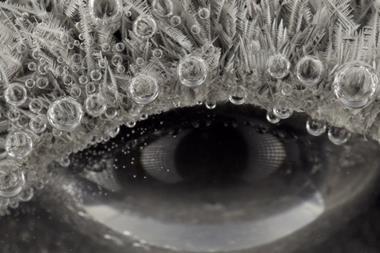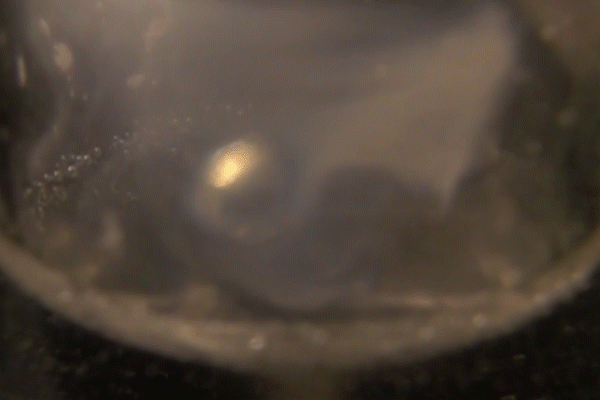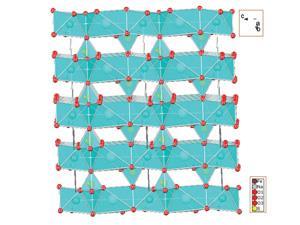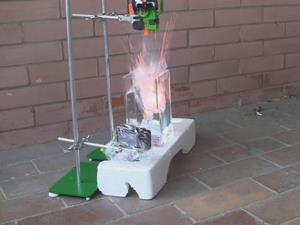From day one in all the best chemistry classes, we are warned never to let sodium, or any other alkali metal, get wet. The results can be explosive, to say the least, as anyone who has ignored the textbooks knows. But, what if you could put sodium in water and take control of the thermodynamics so that the metal does not explode? What interesting movements of electrons might take place and what products might emerge?
Philip Mason and Pavel Jungwirth of the Academy of Sciences of the Czech Republic in Prague and colleagues in Germany have done just that. They explain that under normal conditions, as soon as sodium touches water, electrons flow rapidly from the alkali metal to the water, forming hydrogen and hydroxide in a strongly exothermic process. In earlier work they showed that the outpouring of electrons leads to an enormous positive charge on the piece of metal, which makes it so electrostatically unstable that metal spikes shoot into the water, raising the surface area of metal in contact with water and accelerating the reaction in a so-called Coloumb explosion.
The team has now found a way to take control of this instability in a sodium–potassium alloy by adding a small amount of hexanol or by gently placing the alloy drop on water under an argon atmosphere. Held temporarily in this non-exploding state, the team could use a combination of high-speed camera imaging and visible and infrared spectroscopy to observe and characterise the system through each stage of the reaction.
The alloy’s low density and the generation of gas buoys the drop and reduces interactions with water while continuous flushing with argon precluded ignition of the hydrogen. The team were able to observe the characteristic blue colour of free electrons in solution – solvated electrons – with the naked eye. The slow motion film reveals that the energy-releasing reaction proceeds steadily, with the metal drop glowing red hot and eventually evaporating. The final product is a perfectly transparent drop of molten hydroxide that is briefly stabilised on the water as a result of the Leidenfrost effect, the same effect that lets water droplets bounce on a hot stove. The hydroxide droplet ends its life by whirling around the vessel for a few seconds and ultimately bursts spectacularly as it cools.
‘I’d say the work is essentially done but my dream is to fix the high school chemistry teaching and textbooks,’ Jungwirth says. ‘Students are shown the alkali metal reactions but it could be done in a much nicer and elegant (and safer) way, they could actually see the blue electrons in water with the naked eye and they could be given the right explanation of this surprisingly complex phenomenon.’
‘I should first say first of all that I find the work of Mason and Jungwirth truly exciting,’ says Stephen Bradforth of the University of Southern California, an expert in ultrafast chemical reactions. ‘I’ve been amazed that chemists’ understanding to date of such an iconic reaction is so primitive. Their mechanistic work is really neat and of appeal to all to better understand what is such a visual demonstration of how energy is bottled up in alkali metals.’
References
P E Mason et al, Angew. Chem., Int. Ed., 2016, DOI: 10.1002/anie.201605986





















No comments yet